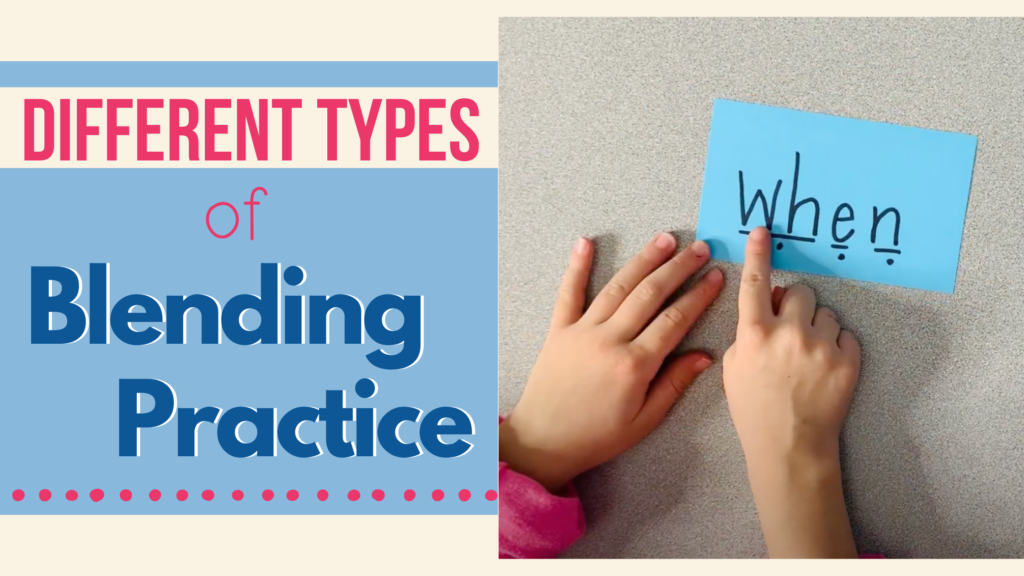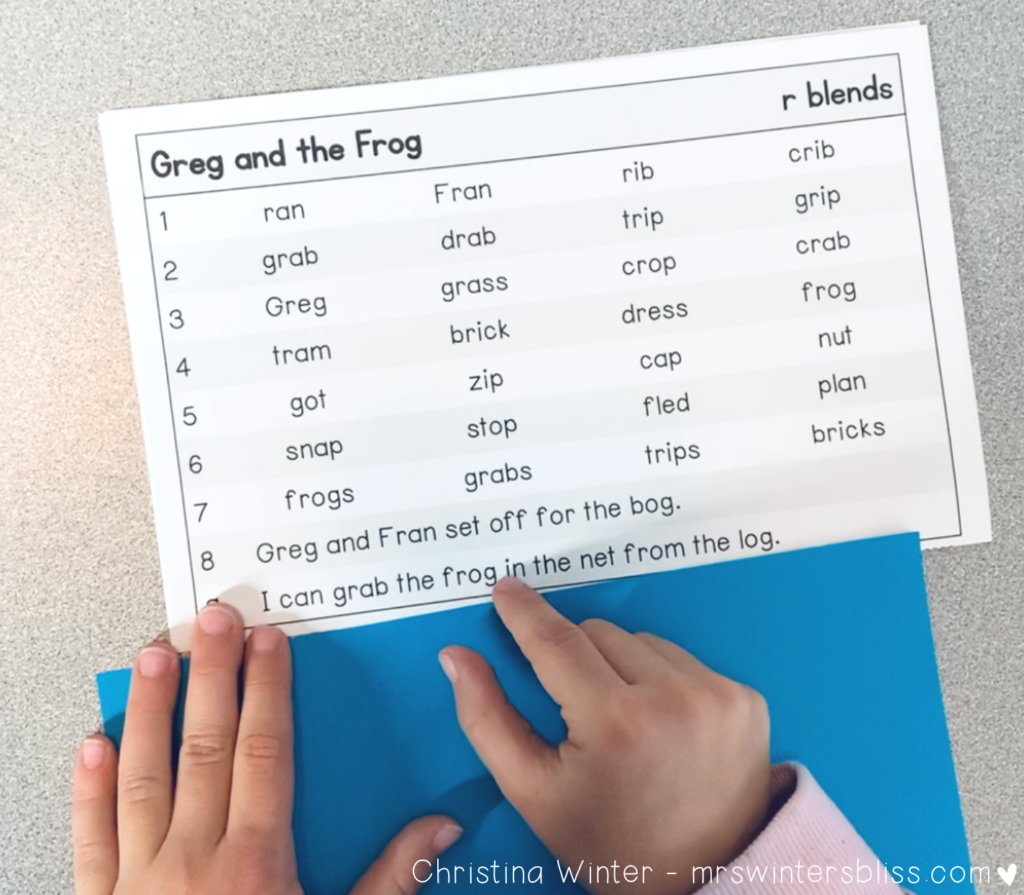

In this post, I discuss the importance of offering blending practice to beginning readers. I explain the difference between successive (also known as additive sound-by-sound blending)and whole word blending (also known as final blending) practice and explain when to use each. I share best practices for blending instruction and suggest resources you can use to give your students meaningful blending practice.
One of the most important skills children need to learn in order to become fluent, successful readers is how to blend words. Blending is the stringing together of letter sounds to read or say a word. It is the main strategy we use to teach students how to decode and one that requires A LOT of practice.

.
Today I am eager to talk more about blending. I will explain why it is important to teach students how to blend, explain different types of blending and when to use each, and share best practices for teaching blending. Finally, I’ll leave you with resources you can use to bring more blending practice to your kindergarten, first, and second-grade classroom.
Why Teach Blending?
Teaching students how to identify and manipulate the sounds in words helps them to read and spell. When they understand that spoken language can be broken up into individual sounds and that letters represent those sounds, they are able to read and write in an alphabetic language. Additionally, blending activities help students develop phonological and phonemic awareness, which is a strong predictor of reading achievement.
Research shows that the more time a teacher spends on blending, modeling blending, and providing blending practice in isolation and in context, the greater the student gains!
Blending is clearly an important thing to teach our students, so let’s look at the different ways that can be done….
Different Types of Blending Practice
There are two main types of blending: Successive Blending, also known as Additive Blending and Final Blending, which is also referred to as Whole Word Blending.
Successive Blending or Additive Blending
Successive (or additive) blending is a great scaffold for early or struggling readers. With this type of blending, you blend one sound at a time as you work your way through the word. This practice allows you to slowly work through the process of sounding out a word and reinforces each letter sound.
Here is an example of a successive blending routine for the word cat:
Step 1. The teacher shows students the letter C and the student points to it and says the sound /c/.
Step 2: The teacher shows the student the letter a. The student points to it and says the sound /a/.
Step 3: The student slides their finger under the two letters as they blend the sounds to form /cccaaa/. The student can do this a second time and blend the sounds more quickly, /ca/
Step 4: The teacher shows the students the letter t. The student points to it and says, /t/.
Step 5: The student slides their finger under all three letters, blending them together to form /cccaaat/. They then blend the sounds more quickly to say the word “cat”.
Successive blending is particularly helpful for students who may have trouble with phonological working memory. These students can say each sound in a word, but then when they recode it (read the word after saying each of the sounds) they say a completely different word or say the sounds in a different order. You likely have students like this in your classroom. To help them, try successive blending. It allows them to store the sounds in their mind as they go.
In general, students should not spend more than a few weeks on successive or additive blending, but it is recommended that you temporarily bring it back when students start reading words with beginning blends.
Whole Word Blending or Final Blending
Whole word blending is when you blend one sound at a time as you work through the word. It is sometimes referred to as final blending and is more efficient than successive blending. It is what you will rely on the majority of the time. In whole word blending, you run your fingers under the letters in a word and string them together.
Here is an example of a whole word blending routine for the word cat.
Step 1: The teacher writes or displays the word cat.
Step 2: Put your finger at the beginning of the word. Slowly run your finger under each letter as you string the sounds together. /cccaaat/. Do not pause in between sounds. The sounds will melt together.
Step 3: Slowly compress the word. Go from /cccaaat/ at a slow pace to /ccat/, and finally /cat/. Repeat the word cat to complete the routine.
Best Practices for Teaching Blending
In his book, A Fresh Look at Phonics, Wiley Blevins shares valuable information and guidelines for best practices when it comes to successive and final blending.
One thing to note: Belvins does use the terms a little differently than some (myself included). What he calls final blending, others call successive or additive blending.
He recommends the following:
- Model and apply blending every day for early readers
- Begin teaching blending using words that start with CVC words that have continuous sounds. This includes the vowel sounds and the consonant sounds /f/, /l/, /m/, /n/, /r/, /s/, /v/, /z/
- Make sure the blending work you do with students includes plenty of words! Minimum of 20 for Grade 1 and up
- Select blending lines that contain few contrasts so students can practice fully analyzing words
- Create blending lines that will provide you with formative assessment information
- Ensure the blending lines offer differentiated practice to meet the needs of all students
- Include sentences that provide text-reading practice
Word Blending Practice Activities
Decodable Books with Comprehension Questions
If you are looking for ways to give your students more blending practice, you’ll want to take a look at my decodable books and passages resources. Each book and passage in these resources includes blending lines that help prepare students for reading.

.
The words in the list offer blending practice and are used to introduce the new skill for the decodable text you are reading. This video walks you through how you would use the blending lines from this resource.
Read more about a routine for using these blending lines and my decodable books here.
If you are ready to give blending lines a try in your classroom, I am happy to offer you a FREE sample of my Decodable Books Resource. This sample includes:
💕 5 FREE decodable books aligned to a research-based systematic phonics scope and sequence.
💕 Explicit lesson plans for each book. These lesson plans will walk you through how to use the included blending lines.
💕 Student activities to use before, during, and after reading.
💕 Audio recordings for each passage to ensure you can easily differentiate based on students’ needs.

.
I hope the blending practice strategies and resources I have shared here today will help your students move from emerging to fluent readers and writers!









